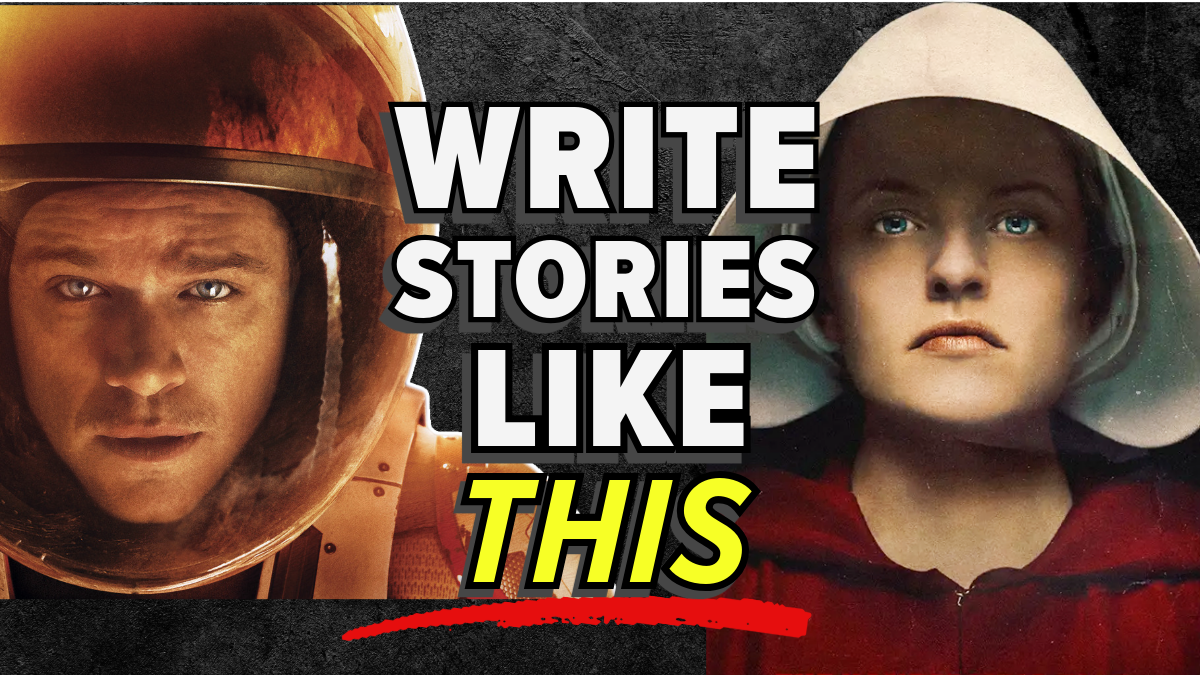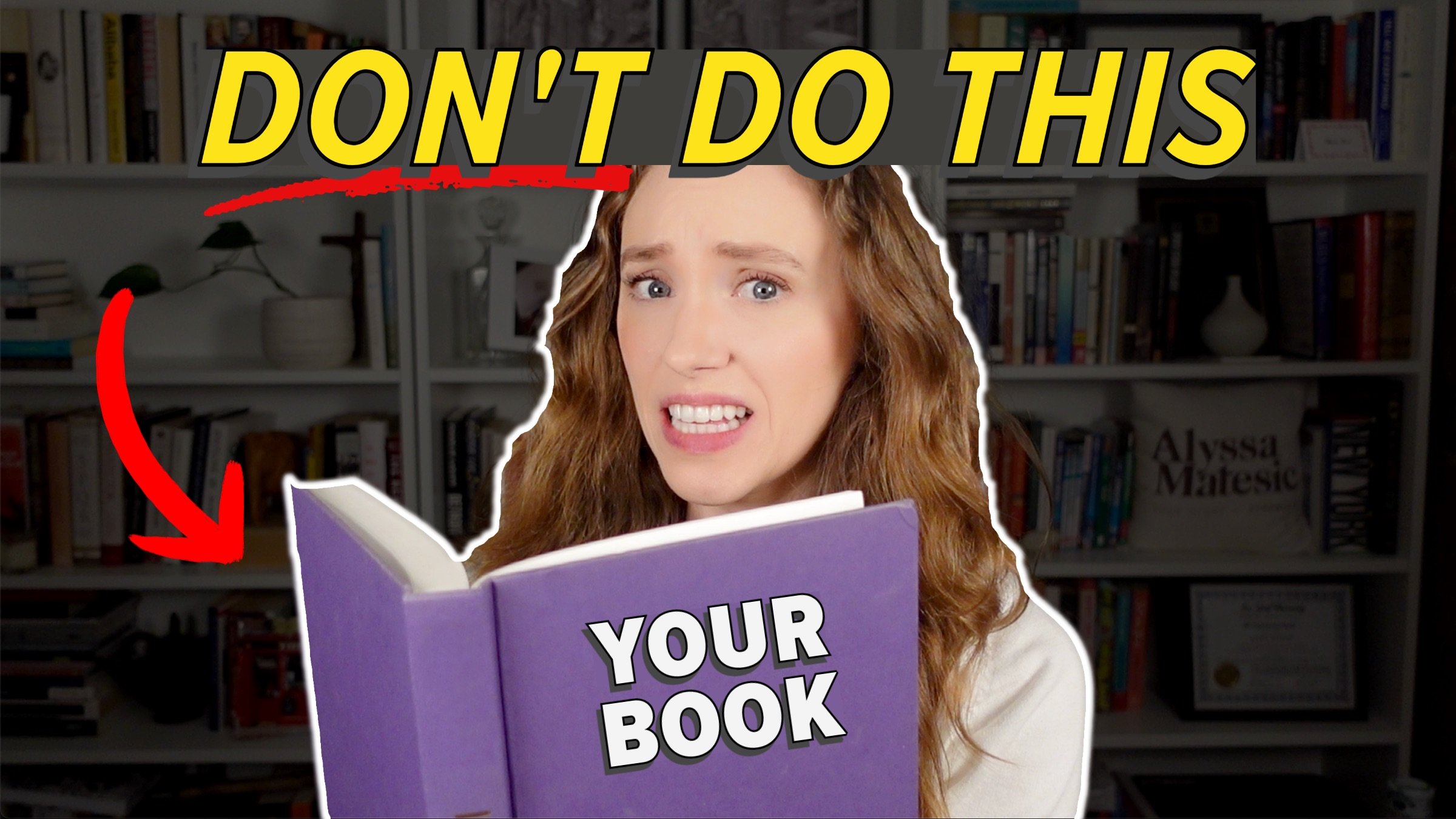How to Develop a High-Concept Book Idea That Agents Can’t Resist
HIT PLAY OR READ THE POST BELOW:
What made all of these wildly popular books so successful? It's not the genre, not the writing, not even the author. In the publishing industry, this “secret sauce” is known as a “high-concept premise.” But what does “high-concept” mean, and how can you make your book high-concept?
I'm going to walk through what sets a high-concept book apart from the rest and give you a framework to craft a high-concept premise that makes your book sell itself. Make sure you read all the way through to the end so you don't miss out on your next great story idea.
What is a High-Concept Book?
First, let's talk definitions. What is a high-concept book? These stories have an attention-grabbing premise that can be summarized succinctly in a single sentence. Because the plot is so easy to grasp, these books essentially pitch themselves and immediately make someone want to pick it up.
High-concept books tend to have a broad appeal and a large potential audience, which is what makes them so attractive to literary agents and publishers — who, of course, want to sell the most books they possibly can.
There's a common misconception that high-concept books tend to focus more on action-driven stories or plot-driven stories that don't have as much character development. This is not necessarily true, and there are many examples of high-concept novels that also feature strong character development.
Now, there are certain genres that might lend themselves more naturally to a high-concept premise, such as thrillers or sci-fi, but you can have a high-concept book across any genre.
At the same time, also know that it is not essential for you to have a "high-concept" book to get traditionally published. Literary fiction, for example, tends to be a genre that is quieter on plot and more focused on thoughtful prose. These novels may or may not have a high-concept premise but can still be executed in such a way that makes them extremely successful stories.
You will see the term "high-concept" listed in many literary agents' and editors' manuscript wish lists, but know that even if your book is high-concept, the pitch alone is not enough to sell it. It also has to be executed extremely well.
Examples of High-Concept Books
Let's go through a few examples of high-concept books that also have a very high level of execution that allowed them to reach bestseller status. The basic plot of all of these books can be described succinctly in a single sentence, which is what signals that they are high-concept.
The Silent Patient by Alex Michaelides: A woman brutally murders her husband but refuses to talk.
The Martian by Andy Weir: A stranded astronaut must use his ingenuity and survival skills to survive on Mars while awaiting rescue.
The Handmaid's Tale by Margaret Atwood: The United States becomes a totalitarian society amid a fertility crisis and women are forced into sexual servitude.
Just because each of these books has a high-concept premise doesn't mean they aren't meaty in terms of the themes that they explore. For instance, The Handmaid's Tale in particular explores a lot of issues related to gender, patriarchy, power and control, politics, and religion.
Note too that these examples come from different genres, including suspense, sci-fi, and speculative fiction, though you will find high-concept plots in genres other than these.
How to Write a High-Concept Book
So now that we know what a high-concept book is, how do you come up with a high-concept story idea? Or how can you tell if the book you've already written is high-concept?
Let's walk through four proven techniques to craft a high-concept premise:
1. Reimagine a Familiar Trope or Storyline
Number one is to reimagine a familiar trope. Many high-concept books take a familiar storyline or trope that readers are already familiar with in our literary canon and twist it or turn it on its head in some way.
This strategy works so well because we will immediately already understand the foundation of the type of story you're telling and be excited for the fresh spin you are going to take with it. This makes it at once familiar but also completely original.
For example:
A classic western, but set in space – Star Wars
Pride and Prejudice, but with zombies – Pride and Prejudice and Zombies
You can immediately conceptualize what this story will be and how it will play on those familiar storylines.
2. Ask “What If”
The next approach to craft a high-concept premise is to ask "what if." Try asking big, bold questions that challenge the reality we find ourselves in. These will immediately create a sense of intrigue for the reader to want to see how that might play out in your story.
These questions could be super broad and far-reaching, or they could be super specific, narrowing in on a human experience that few people have or know about. For instance:
What if dinosaurs existed in the modern world? That's Jurassic Park.
What if you could travel back in time and prevent the JFK assassination? That's 11/22/63 by Stephen King.
What if two teenagers with cancer fell in love? That's The Fault in Our Stars.
These questions are guaranteed to make your story immediately intriguing.
3. Create an Unexpected Mashup
The third way to craft a high-concept premise is to create an unexpected mashup. High-concept books can often be described in the “X meets Y” formula, where you put together two unexpected and wildly different stories.
Here's a fun exercise you can use to come up with some high-concept story ideas:
Make a list of some of your favorite stories, whether they're novels, TV shows, or movies. Ideally, they would be in different genres.
Write down what you love most from each of those titles. For instance, that could be the setting, the characters, or a specific part of the plot.
Now, try mixing and matching those different elements. What if you took the characters from Title A and put them in the setting of Title B?
Here are some examples of the “X meets Y” premise in action:
The novel Before I Fall could be described as Groundhog Day meets Mean Girls.
The novel Cinder could be described as Cinderella meets The Terminator.
You would never think initially of those titles going together, but then once you put them together in your mind, you immediately have a sense of what that story is.
Remember that the titles you use don't have to fall into the perfect criteria for a comp title, which we often talk about in query letters. They don't necessarily have to be in the genre you're writing in or the format you're writing in. They don't even need to have been published in the past five years, like comp titles should. The idea is for these titles to help the agent, reader, or publisher immediately conceptualize the story you have crafted.
4. Experiment with Structure
The final technique for crafting a high-concept premise is to experiment with structure. Employing a unique narrative structure or method of storytelling can take what feels like a normal plot and instantly make it high-concept. The unique structure on the page is what makes this book stand out from others in the genre. For example:
Daisy Jones and the Six takes a unique interview structure that makes the story feel like a documentary
The novel Sadie is a mystery told in the format of a podcast transcript
Now that you know the secret sauce to making an agent, reader, or publisher immediately want to pick up your book, you can start developing your next great book idea or crafting your own high-concept pitch for your current WIP. Thanks so much for reading, and happy writing!






